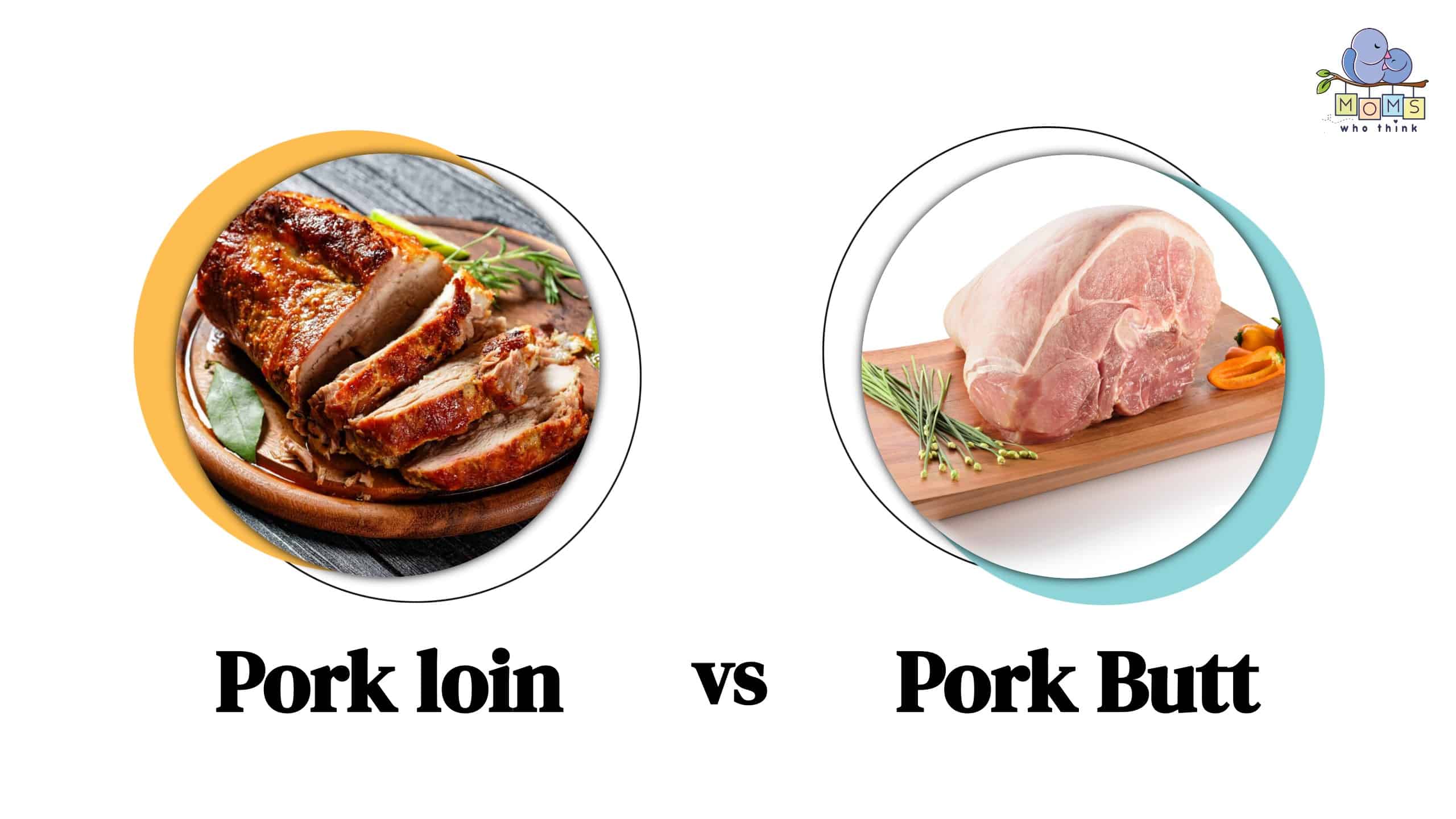Pork is a culinary powerhouse for home cooks looking for affordable protein sources with unparalleled flexibility when it comes to meal preparation. With its compatibility with different spices, vegetables, and sauces, pork takes well to everything from dry heat methods like roasting or searing to wet heat techniques like braising or stewing. Two varieties of pork, pork loin and pork butt, tend to get frequently talked about in terms of cut selection, but understanding the differences between these two helps make more informed cooking decisions.
To properly leverage the benefits of these protein-packed cuts at mealtime along with their fantastic high-quality taste, it's essential you choose your cut wisely. This is because depending on which one you choose, different preparations may lend better results than others. Finally, consuming this classic meat could have potential health-boosting properties too! In this article. We’ll highlight some reasons why incorporating balanced amounts of pork butt and pork loin into our diets can be good for our general well-being.
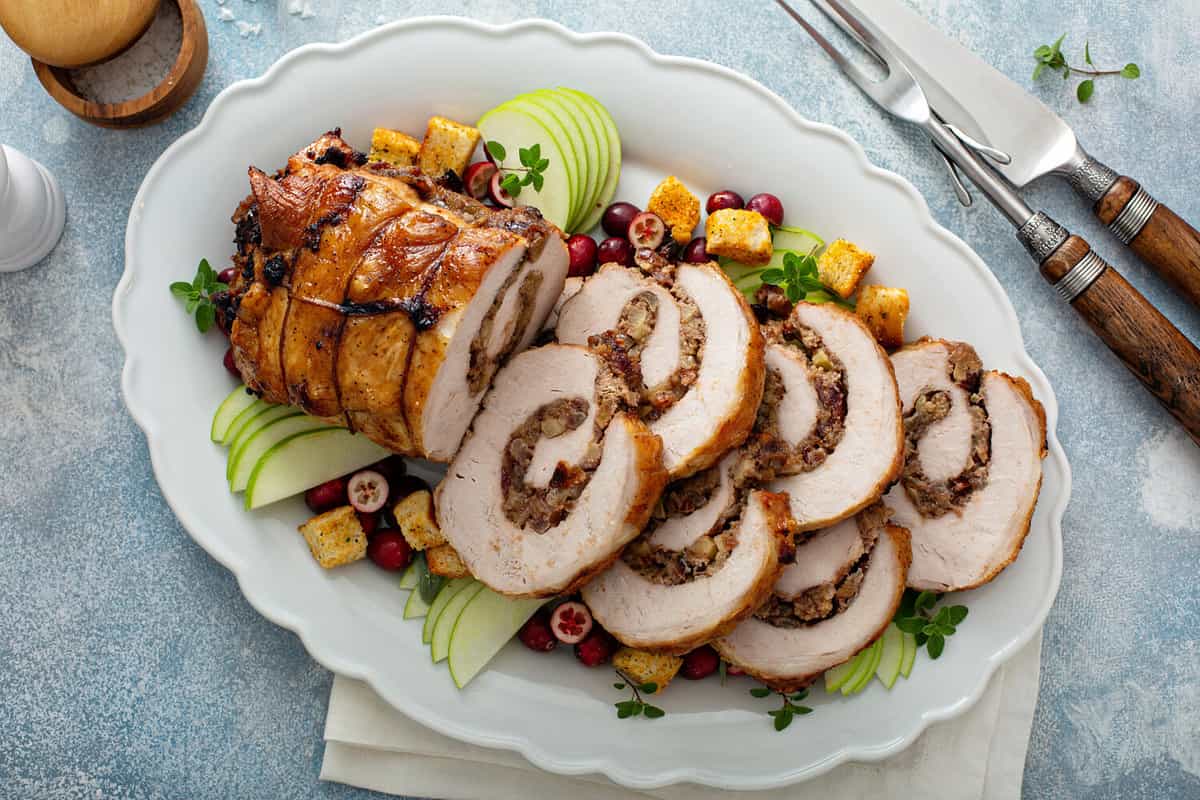
©Elena Veselova/Shutterstock.com
Differences Between Pork Loin and Pork Butt
When it comes time to pick out cuts of pork from the market, two commonly seen options are pork loin and pork butt – but what sets them apart? As it turns out, they offer distinct benefits depending on how you plan on using them in your meal prep! Pork loin originates from the pigs' back end specifically. Because of this particular placement, it tends to contain much less overall fat content than other types of pork. The result is a lean yet tender cut of pork that works wonders when grilled or roasted up nicely – perfect if you're looking for healthy alternatives without having to sacrifice flavor along the way! Once ready for serving time, simply slice into portions before topping with gravy or glazed vegetables as desired.
In contrast, though, is pork butt. It comes from a pig’s shoulder area. This cut brings with it a higher fat content and the potential for wonderfully rich flavors to unfold as it cooks up. For those recipes that call for long cooking times to help reach maximum tenderness (stews and braises come to mind), pork butt is an ideal choice. Allow yourself plenty of time to coax out the full richness of its flavor – you won't be disappointed when you finally get to dig in!
Comparing Flavor & Texture of Pork Loin and Pork Butt
Pork is a delicious protein source that comes in the form of cuts such as loin and butt, each having its unique flavor profile. If you're preparing a dish featuring pork but are unsure where to begin regarding choosing the right cut of meat – consider factors like taste and texture preferences.
Pork butt contains more fat marbling that provides an intense flavor profile many people find appealing. On the other hand, pork loin has less fat content resulting in milder flavors – both have their values depending on what your preferences are.
Maintaining a tender yet juicy texture when cooking these cuts correctly is essential; however- this can be challenging as overcooking will make them dry out. It's worth noting that determining when your pork butt will be fully cooked can pose difficulties due to uneven fat distributions present within each cut. This often leads to some parts or layers appearing raw even though they've been adequately cooked!
Cooking Times & Techniques for Each Cut of Pork
Any pork connoisseur knows there are two cuts all taste buds crave – pork loin and pork butt! Despite their similarities, these two prime cuts are differentiated based on where they originate within the pig and how much work went into preparing them for your culinary delight.
While loin comes from atop a pig's back leg, butt is derived from beneath its shoulder blade. Their fat content serves as a game-changer in the cooking time required, where higher fat levels require more time for desired textures.
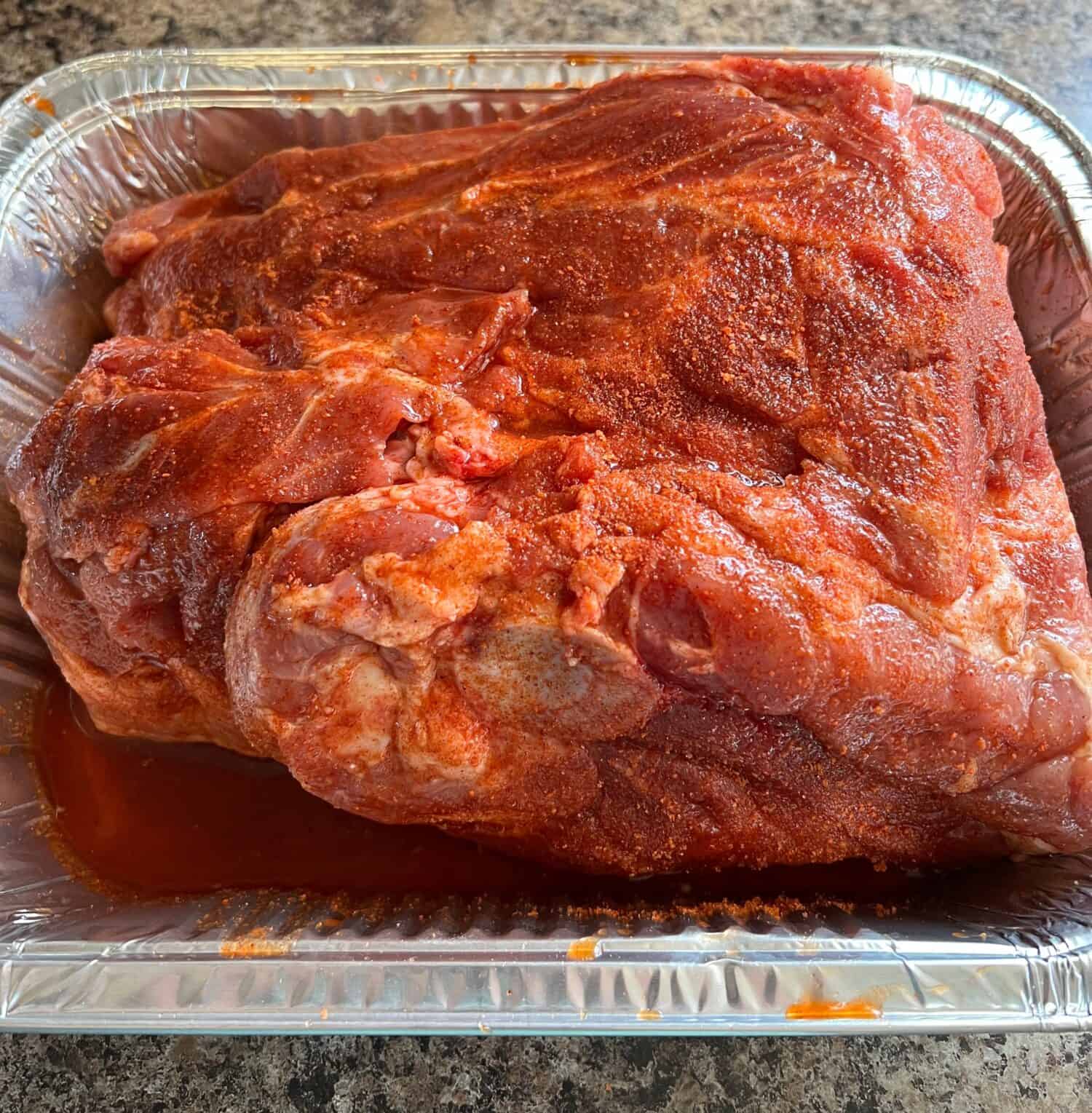
©Photos-by-Troy/Shutterstock.com
Fat Present
Pork loins boast boneless tenderness with minimal amounts of fat, which makes them a pinnacle in fine dining cuts. Comparatively, pork butts come bone-in and are quite unique in their flavor profile. This is due to high-fat levels found throughout this cut while requiring longer cooking times to break down excess moisture levels than other meat cuts like chicken thighs or beef brisket do!
Pork loin reigns supreme as one of the leanest premium-priced cuts, while pork butt supersedes all with its added fatty goodness taking center stage in flavor frontiers.
Cook Times
Cooking times vary depending on the cut size and cooking method used. Roughly smaller chops or tenderloin dishes need approximately twenty minutes at 350°F (176°C) per pound, while larger roasts or whole shoulder may take can up to two hours per pound if cooked between 325°F (163°C).
Pork butt gets its origin point near the pig’s spine located within its upper hindquarters, also called Boston Butt. This cut keeps plenty of connective tissues that can be broken down through long cooking methods such as braising or slow-roasting and improving depth flavors as a result! For those seeking livelier meat textures and a flavorsome taste experience, quick, high-heat cooking is your best option for pork loins.
Consider giving preference to cooking methods such as grilling or pan-frying. However, note that drying out may happen if you’re not careful in preparing this cut adequately; ensure a medium-rare outcome to preserve the cut’s tenderness.
Exploring Different Recipes with Both Cuts & Their Flavor Profiles
When considering recipes featuring pork, it's essential to recognize the differences between two prominent cuts – pork loin and pork butt – each boasting distinctive flavors. Pork loin is known for being leaner with a subtle taste profile, while pork butt contains greater amounts of fat, contributing to its more robust taste. Regardless if your palate favors savory or sweet dishes, both cuts host unlimited possibilities when preparing meals.
How to Prepare & Cook Different Cuts of Meat for Maximum Flavor Potential
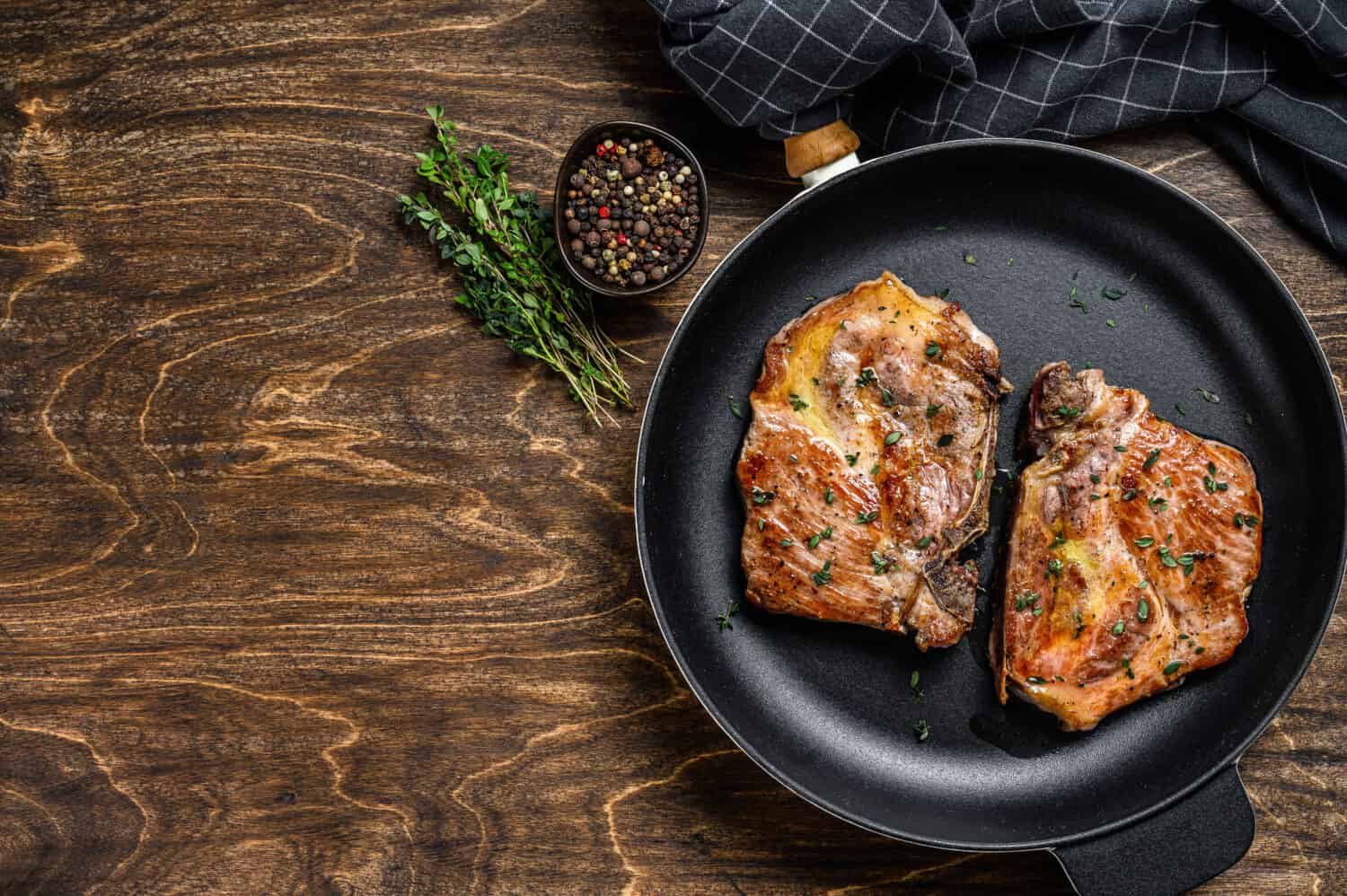
©Mironov Vladimir/Shutterstock.com
Creating well-prepared meats that boast rich flavors involves various techniques that optimize their potential flavors. Techniques such as marinating pork loins with your favorite marinade for no less than four hours, indirect grilling of butts with low-medium temperature at longer rates, or slow-cooking with the initial high heat to brown meat before lowering to medium/low temperature. Whole pork loins offer stronger flavors, although they can be tricky to carve; sliced fillets are easier to cut but lose some of that flavor that whole pork loins provide.
Fillets also take longer to cook and are more expensive than whole pork loins. For those enthusiastic about barbecuing, pork butt cuts are versatile options that absorb smoke and seasonings well. They make a good choice when braising, oven-cooking, or slow-grilling/roasters.
Nutrition Facts
The main difference between pork loin and pork butt is their location on the animal. Pork loin comes from the back of the pig, while pork butt comes from the front. The difference in location leads to different amounts of fat and calories in each cut of meat.
The more tender cuts of meat are located closer to the head end (the front) of the animal because they don't have as much muscle mass as other areas. These tender cuts include tenderloin, ribeye steak, filet mignon, and top round roast (or rump roast). These cuts are leaner than other cuts because they have little connective tissue or fat marbling within them.
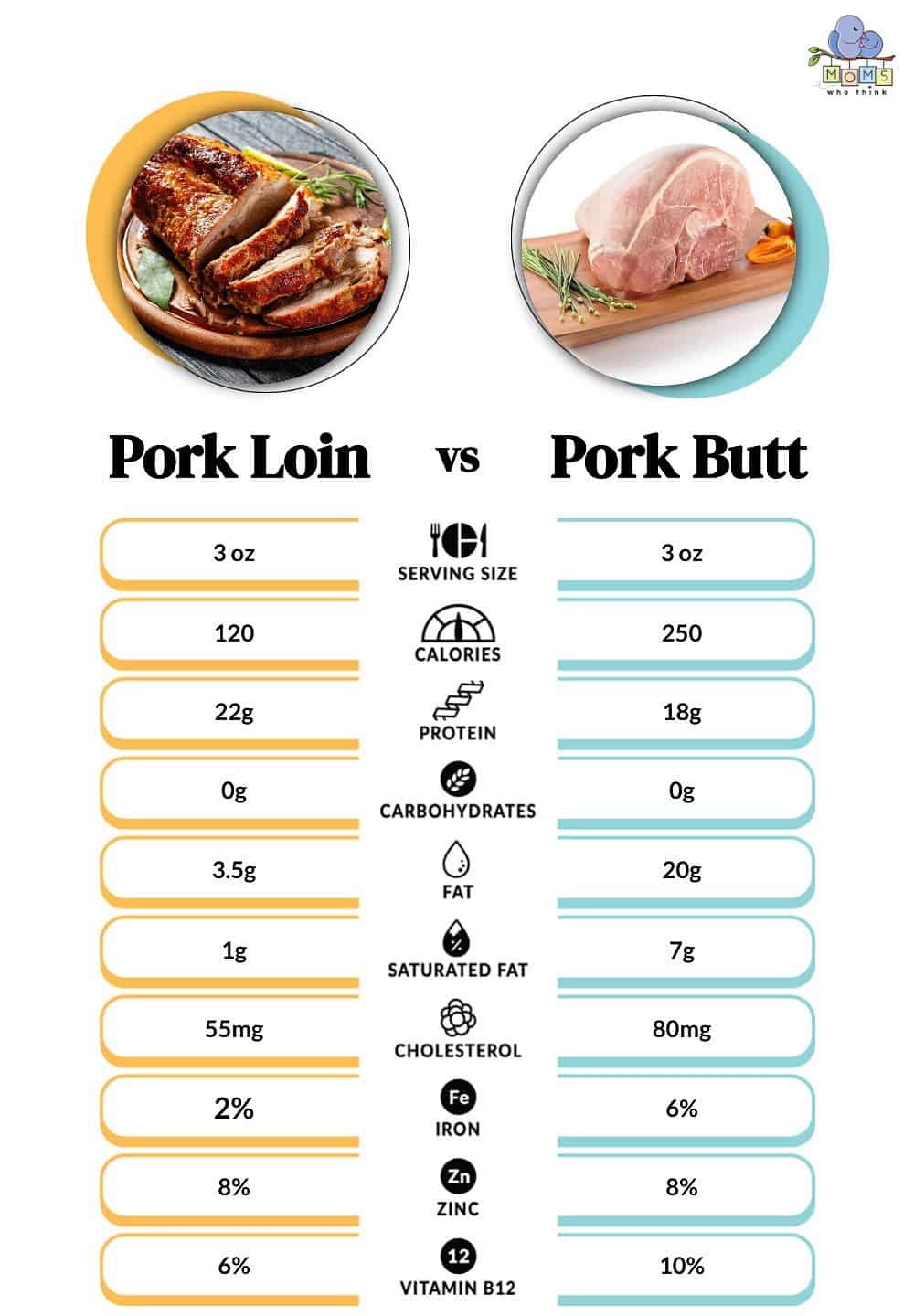
Pork Loin Nutrition:
When choosing cut options, it's crucial always to consider the nutritional benefits that come along with them. Pork loin passes as an excellent choice since it comes from one of the leanest parts of pigs.
This cut goes through trimming before being sold to remove excess fat, making it much healthier. Pork loin can be roasted or grilled, depending on your preference. You can even braise or make sausage out of this versatile cut!
Pork loin provides you with essential nutrients such as vitamin B6, niacin, selenium, zinc, and phosphorus while giving you only 120 calories per three-ounce helping. USDA approval and 55 mg of cholesterol make this a great pick for those watching what they eat.
Pork Butt Nutrition:
Pork butt can also serve as an ideal alternative source of nutrition; It has high levels of protein compared to other meats and contains iron along with zinc without necessarily having high cholesterol levels. This makes pork butt an excellent option for people who need sustainable and lean protein.
However, frying or grilling pork butt may dramatically increase the fat levels, so it's best to manage how you cook it.
One 3-ounce serving equates to 250 calories with zero carbohydrates or dietary fiber, but it provides your body with 18 grams of muscle-building protein!
Alternatives to Pork Loin:
The pork loin is one of the most popular meats in America. It's a great cut of meat, but it can be expensive, especially if you buy it from the grocery store.
If you're looking for an alternative to pork loin but don't want to sacrifice quality or flavor, there are plenty of other cuts that will fit the bill. Here are some alternatives for pork loin:
One option might be leaner, boneless, or center-cut pork chops that are often more expensive but have significantly lower fat content. Another choice is tenderloin – a thin and lengthy muscle extending from a pig’s back. It has a subtle taste and suits quick high temp cooking methods such as searing or roasting when wrapped around various herbs & veggies for heightened flavors.
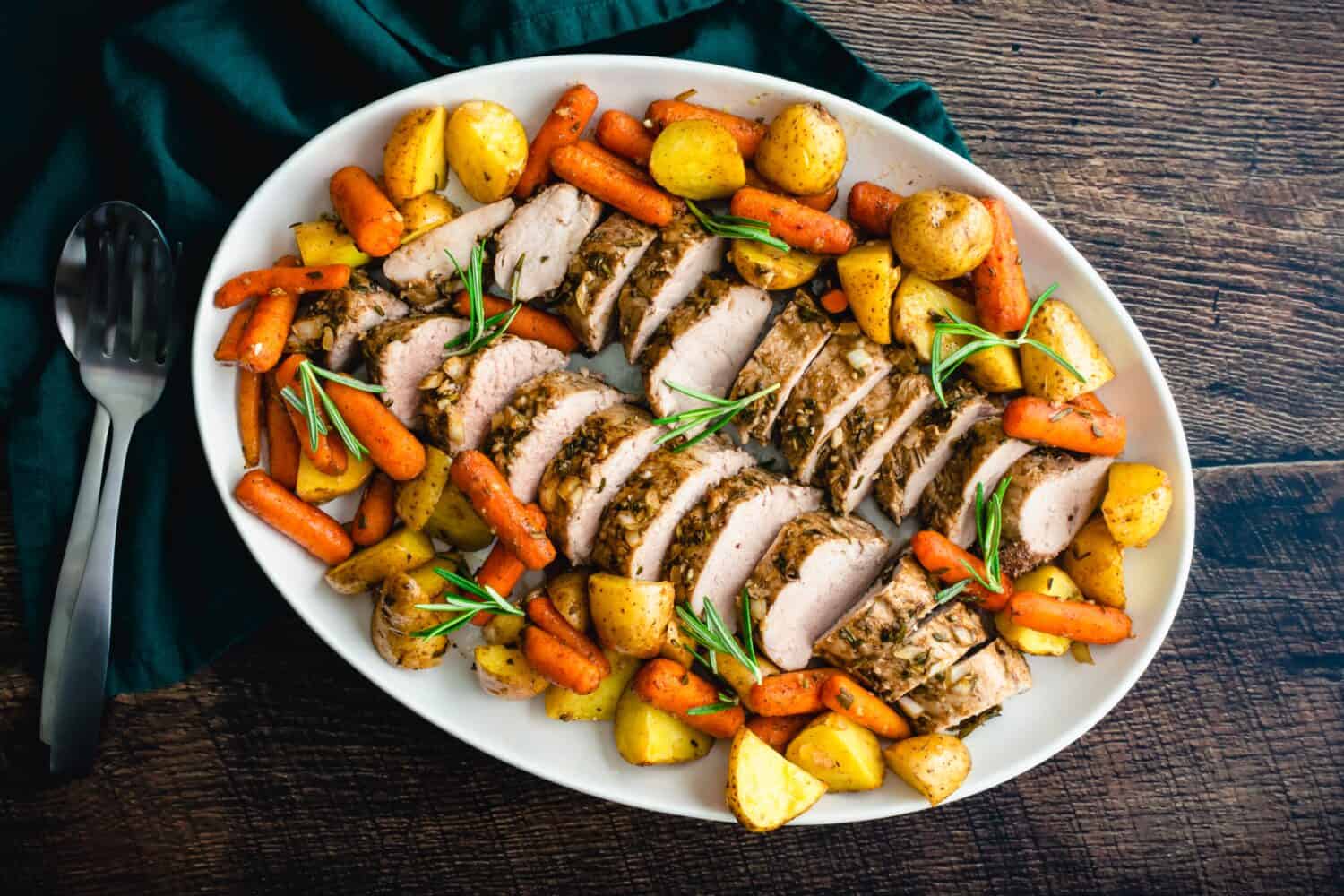
©Candice Bell/Shutterstock.com
Additionally, there's the pork sirloin roast consisting of diverse components like loin muscles, connective tissue, and fatty bits, so it stays juicy even while being cooked through fast!
Turkey breast: Turkey breast is one of the best alternatives to pork loin because it’s low in fat and calories and high in protein. It also has a mild taste that works well with many different kinds of seasoning.
Chicken breast: Chicken breast is another lean protein that works well as an alternative to pork loin. It has slightly more calories than turkey but less fat and cholesterol.
Beef tenderloin: Beef tenderloin is another option that can be used to replace pork loin in recipes. This cut contains fewer calories than regular cuts of beef and has less fat, making it a healthier option overall.
Alternatives to Pork Butt
When it comes to pork cuts, there are some delicious alternatives available if you're looking for something different than the classic butt.
A popular choice is the leaner option – pork tenderloin! This versatile cut can be cooked up in multiple ways, such as slicing it up thin as an appetizer or chunky bits, which work perfectly in stir-fries and tacos. For an easy summer dinner idea, just toss some slices on the grill along with olive oil, salt, and pepper.
If you're craving some juicy chops instead – grilled, fried, or baked – we've got you covered! They match any side dish perfectly, from potatoes & veggies to buttered rice. If wanting something handheld instead, just place them between two slices of bread alongside fresh tomato & lettuce along with mayo, and voila!
Although not identical, another cut that works well as a substitute is pork shoulder. It's cheaper and widespread in availability, meaning it’s still great for large quantities when pulled pork is on the menu. No need to fret as some equally tasty options include braised chicken thighs or beef chuck roast.
For anyone seeking a meatless option – tofu serves as an excellent protein source, which is low in fat and cholesterol free but still has those same comfort food textures of traditional pulled pork. So easy to prepare: just add just two ingredients from your pantry: soy sauce and garlic powder.
Conclusion
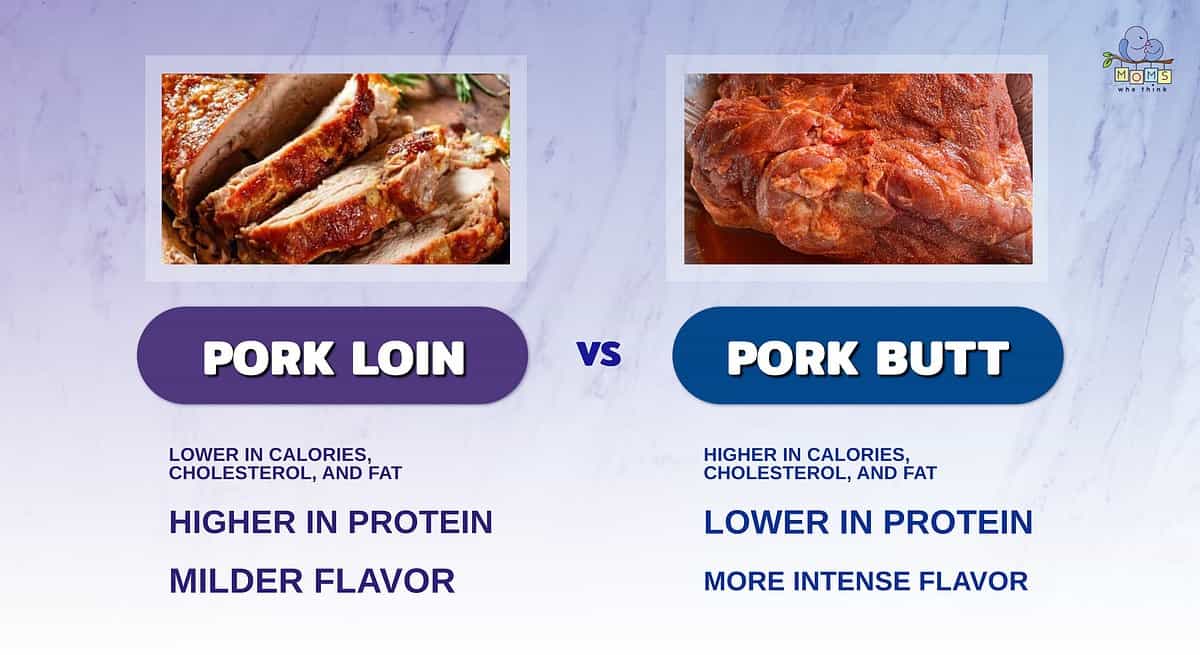
- Pork loin is a lot lower in calories, fat, and cholesterol compared to pork butt. Pork butt is definitely not a great choice if you're on a diet; pork loin is a much better alternative.
- Pork butt and pork loin are both high in protein, but pork loin edges pork butt out in this category. Given how much fat and cholesterol pork butt has, the value of its protein content goes down.
- Due to its high fat content, pork butt has a rich and intense flavor. Pork loin, on the other hand, has a milder flavor.
The difference between pork loin and pork butt is quite significant. While both are delicious cuts of meat, they do have distinct characteristics that make them unique. Pork loin offers a more tender texture and mild flavor, while pork butt is considerably less expensive and has a much stronger flavor. Ultimately, the choice will depend on the dish you are making and your own personal preference.
Take a look at this Apple Butter Pork Loin:
PrintApple Butter Pork Loin
Ingredients
2 (1 1/2 pound) pork loins
seasoning salt to taste
2 cups apple juice
1/2 cup apple butter
1/4 cup brown sugar
2 Tablespoons water
1/4 teaspoon ground cinnamon
1/4 teaspoon ground cloves
Instructions
1. Preheat the oven to 350 degrees F.
2. Season the pork tenderloins with seasoning salt, and place them in a 9×13 inch baking dish or small roasting pan.
3. Pour apple juice over the pork, and cover the dish with a lid or aluminum foil.
4. Bake for 1 hour in the preheated oven.
5. While the pork is roasting, mix together the apple butter, brown sugar, water, cinnamon and cloves.
6. After the hour, remove pork loins from the oven, and spread the apple butter mixture over them.
7. Cover, and return to the oven for 2 hours or until fork tender.
